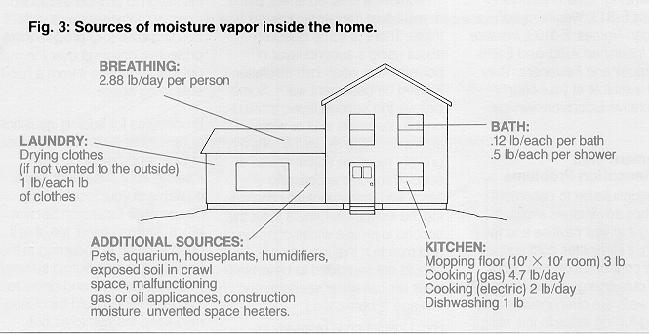Attic Ventilation
Mechanical Ventilation
Attic Ventilation:
Adequate natural ventilation is important in the attics of homes as well.
If a vapor retarder is not present in the ceiling to slow migration of moisture from the home's interior into the attic, attics require 1 square foot of free vent area for each 150 square feet of attic area.
An exception occurs when the attic vents are located in a high/low configuration (i.e., half of the vent area in the eave/soffit area and the other half in the roof ridge area). In that case, 1 square foot for each 300 square feet is adequate. If a vapor retarder is present in the ceiling, attics require 1 square foot of free vent area for each 300 square feet of attic area.
A number of types of vents are available to provide attic ventilation, as shown in Figure 1. As with crawl space vents, most include louvers or screens to prevent the entry of insects and rodents, and these coverings slow air circulation. Therefore, twice the amount of ventilation is needed in most cases to compensate for this reduction.
With or without a vapor retarder, circulation of the air throughout the attic space would be more effective if the vent openings were distributed equally between low areas (eave and soffit) and high areas (roof ridge).
Mechanical Ventilation
A final method to reduce interior humidity levels is to control in-home sources of moisture vapor generation. The kitchen, bath, laundry and utility room are primary moisture generation locations. Consider installing exhaust fans or vents in both the kitchen and the bathroom if they are not present. The vents should be ducted directly to the exterior of the home rather than to an attic or some interior space. Clothes dryers should always be vented to the outside as well. Removing moisture and depositing it outside is an effective way to control condensation problems in both winter and summer months.
Three additional sources of moisture periodically cause problems for homeowners: humidifiers, new construction or remodeling, and malfunctioning combustion appliances.

